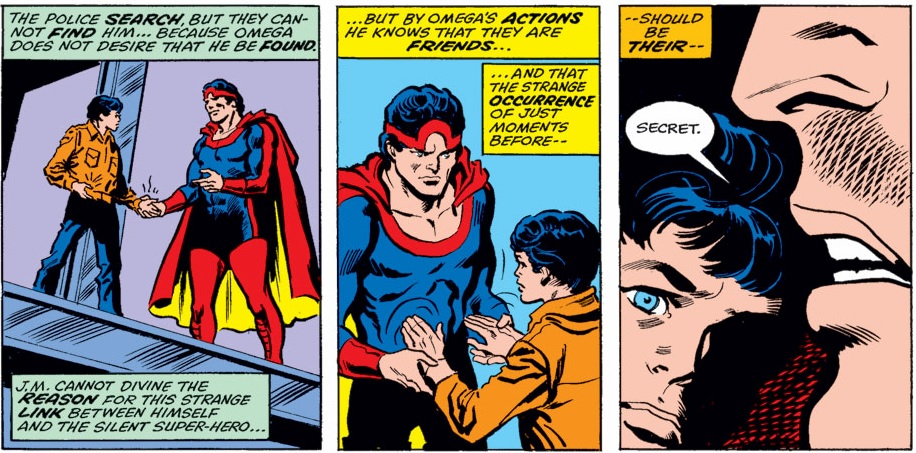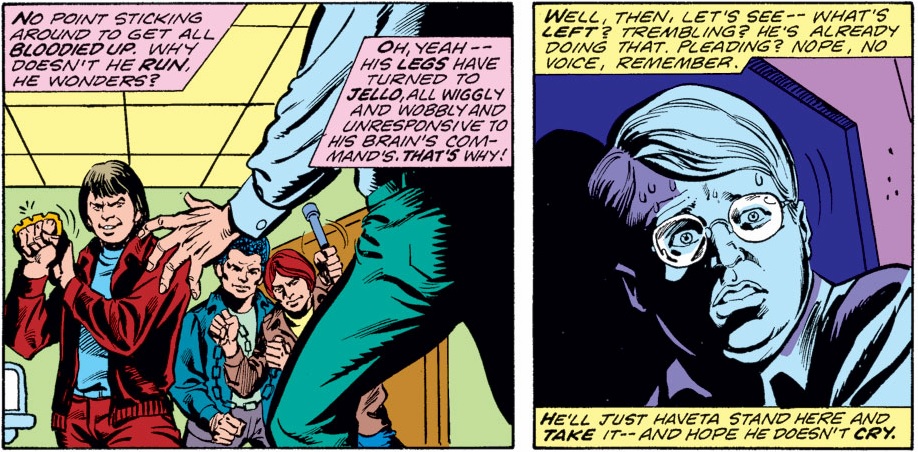
IS militants in Iraq
The following article is an excerpt from a new book, The Jihadis Return: Isis and the New Sunni Uprising, by Patrick Cockburn, Middle East correspondent for The Independent. The book—published by OR Books, and available exclusively here—analyzes one of the West's worst foreign policy disasters and maps the rise of the new jihadis. This is the final chapter, "Shock and War."
In the second half of 2013 I started to write about the way in which jihadis were taking over the Syrian armed opposition; at the same time there was mounting evidence that ISIS, formerly al-Qaeda in Iraq, was rapidly increasing in strength. My newspaper, The Independent, asked me to nominate a “man of the year” for the Middle East and I chose Abu Bakr al-Baghdadi, the shadowy figure who had become leader of ISIS in 2010.
A few days later, on the 3rd of January, 2014, ISIS moved into Fallujah and the government proved unable to recapture it. This was not quite as alarming as it might have been because the Iraqi prime minister was emphasising the mortal threat posed by Sunni counter revolution in Anbar province to scare the Shia majority into voting for him in the parliamentary election on the 30th of April as “Mr Security” and forgetting about government corruption and the lack of services. I thought that perhaps the failure to recapture the city was a deliberate electoral ploy and the assault on it would come after the poll.
But then well-informed Iraqis told me that the failure to retake Fallujah and crush ISIS in Anbar and elsewhere in northern Iraq had not happened for lack of trying. Five of the 15 divisions in the Iraqi army had been deployed in Anbar and had suffered heavy losses from casualties and desertions. Soldiers were sent to the front with only four clips of ammunition for their AK-47s; they went hungry because their commanders had embezzled the money to be spent on food; in oil-rich Iraq, fuel for army vehicles was in short supply; some battalions were down to a quarter of their established strength. “The army has suffered a very bad defeat in Anbar,” a former Iraqi minister told me sometime in April.
Despite these warnings, I was shocked a month or so later when, on the 10th of June, Mosul fell almost without a fight. Every derogatory story I had ever heard about the Iraqi army being a financial racket in which commanders bought their posts in order to grow rich on kickbacks and embezzlement turned out to be true. The ordinary soldiers may have run away in Mosul, but not as quickly as their generals, who turned up in civilian clothes in Erbil, the Kurdish capital. It had become apparent over the previous year that ISIS was run with a chilling blend of ideological fanaticism and military efficiency. Its campaign to take northern and western Iraq was expertly planned, choosing soft targets and avoiding well defended positions, or, as ISIS put it, moving “like a serpent through rocks.”
It was evident that Western governments had entirely misread the situation in Iraq and Syria. For two years Iraqi politicians had been warning anybody who would listen to them that if the civil war in Syria continued it would destabilise the fragile status quo in Iraq. When Mosul fell everybody blamed Maliki, who certainly had a lot to answer for, but the real cause of the debacle in Iraq was the war across its border. The revolt of the Syrian Sunni had caused a similar explosion in Iraq. Maliki had treated the Sunni provinces like a conquered country, but the Iraqi Sunni would not have risen again without the example and encouragement of their Syrian counterparts. The ascendancy of ISIS that resulted from its being able to act as the shock troops of a general Sunni revolt may yet be reversible. But the offensive they led in the summer of 2014 has likely ended forever the Shia-dominated state that was brought into being by the American invasion of 2003.
The fall of Mosul was only the latest of a series of unpleasant and unexpected events in the Middle East to catch the outside world by surprise. The region has always been treacherous ground for foreign intervention, but many of the reasons for Western failure to read the situation in the Middle East are recent and self-inflicted. The US response to the attacks of 9/11 in 2001 targeted the wrong countries when Afghanistan and Iraq were identified as the hostile states whose governments needed to be overthrown. Meanwhile, the two countries most involved in supporting al-Qaeda and favoring the ideology behind the attacks, Saudi Arabia and Pakistan, were largely ignored and given a free pass.
Both were long-standing US allies, and remained so despite 9/11. Saudi Arabia may be now pulling back on its sponsorship of jihadi fighters in Syria and elsewhere around the world for fear of blowback in the kingdom itself. Pakistan Prime Minister Nawaz Sharif may insist that he is doing all he can to rid the Pakistan security services of their extremist elements. But until the United States and its allies in the West recognize that these states are key in promoting Islamic extremism, little real progress will be made in the battle to isolate the jihadists.
It was not governments alone that got it wrong. So too did the reformers and revolutionaries who regarded the uprisings of the “Arab Spring” of 2011 as a death blow to the old authoritarian regimes across the region. For a brief moment, sectarianism and dictatorship seemed to be crumbling; the Arab world was standing at the entrance to a brave new future free of religious hate, where political enemies fought out their differences in democratic elections. Three years later, with the democracy movements having retreated all over the region in the face of successful counter revolution and mounting sectarian violence, this enthusiasm seems naive. It is worth analyzing why a progressive revolutionary alternative to police states and jihadi movements like ISIS has failed so comprehensively.

A protester waving the Egyptian Flag during the 2011 anti-Mubarak protests in Tahrir Square, Cairo (Photo via)
The revolutions and popular uprisings of 2011 were as genuine as any in history, but the way they were perceived, particularly in the West, was often seriously awry.
Unexpectedness is in the nature of revolutionary change: I have always believed that if I can spot a revolution coming, so can the head of the Mukhabarat security police. He will do everything possible to prevent it happening. Real revolutions come into being because of an unpredictable and surprising coincidence of people and events with different motives coming together to target a common enemy such as Hosni Mubarak or Bashar al-Assad. The political, social and economic roots of the upsurges of 2011 are very complex. That this wasn’t obvious to everyone at the time is partly a result of the way foreign commentators exaggerated the role of new information technology.
Protesters, skilled in propaganda if nothing else, saw the advantage of presenting the uprisings as unthreatening “velvet” revolutions with English-speaking, well-educated bloggers and tweeters prominently in the vanguard. The purpose was to convey to Western publics that the new revolutionaries were comfortingly similar to themselves, and that what was happening in the Middle East in 2011 was like the anti-communist and pro-Western uprisings in Eastern Europe after 1989.
Opposition demands were all about personal freedom: social and economic inequalities were rarely declared to be issues, even when they were driving popular rage against the status quo. In the years prior to the Syrian revolt, the center of Damascus had been taken over by smart shops and restaurants, while the mass of Syrians saw their salaries stagnating in the face of rising prices. Farmers, ruined by four years of drought, were moving into shanty towns on the outskirts of the cities. The UN reported that between two and three million Syrians were living in “extreme poverty.” Small manufacturing companies were being put out of business by cheap imports from Turkey and China. Economic liberalization, lauded in foreign capitals, was rapidly concentrating wealth in the hands of a politically well-connected few. Even members of the Mukhabarat, the secret police, were trying to survive on $200 a month.
An International Crisis Group report pointed out that Syria’s ruling class “has inherited power rather than fought for it... and mimicked the ways of the urban upper class.” The same was true of the quasi-monarchical families and their associates operating in parallel fashion in Egypt, Libya and Iraq. Confident of their police-state protection, they ignored the hardships of the rest of the population, especially the under- employed, overeducated and numerous youth, few of whom felt that they had any chance of improving their lives.

Libyan youths celebrate on top of a tank abandoned by the country's military, 2011 (Photo via)
A simple-minded delusion that most problems would vanish once democracies had replaced the old police states was at the heart of the new reformist governments in the Middle East, be they in Iraq in 2005 or Libya in 2011. Opposition movements, persecuted at home or living a hand-to-mouth existence in exile, were reassured by such a notion and it was certainly easy to sell to foreign sponsors. However, a great disadvantage of this way of seeing things was that Saddam, Assad and Gaddafi were so demonized it became difficult to engineer anything approaching a compromise or a peaceful transition from the old to a new regime.
In Iraq in 2003, former members of the Ba'ath Party were sacked, thus impoverishing a large part of the population, which had no alternative but to fight. The Syrian opposition refused to attend peace talks in Geneva in 2014 if Assad was allowed to play a role there, even though the areas of Syria under his control were home to most of the population. These exclusion policies were partly a way of guaranteeing jobs for the boys among the opposition. But they deepened sectarian, ethnic and tribal divisions, and provided the ingredients for civil war.
What is the glue that is supposed to hold these new post-revolutionary states together? Nationalism isn’t much in favor in the West, where it is seen as a mask for racism or militarism, supposedly outmoded in an era of globalization and humanitarian intervention. But intervention in Iraq in 2003 and Libya in 2011 turned out to be very similar to imperial takeovers in the 19th century. There was absurd talk of “nation-building” to be carried out or assisted by foreign powers, which clearly had their own interests in mind just as Britain did when Lloyd George orchestrated the carve-up of the Ottoman Empire. A justification for the Arab leaders who seized power in the late 1960s was that they would create powerful states capable, finally, of giving reality to national independence.
They didn’t wholly fail: Gaddafi played a crucial role in raising the price of oil in 1973, and Hafez al-Assad, Bashar’s father, who had taken power in Syria two years earlier, created a state that could hold its own in a protracted struggle with Israel for predominance in Lebanon. To opponents of these regimes, nationalism was simply a propaganda ploy on the part of ruthless dictatorships concerned to justify their hold on power. But without nationalism—even where the unity of the nation is something of a historic fiction—states lack an ideology that enables them to compete as a focus of loyalty with religious sects or ethnic groups.
It’s easy enough to criticize the rebels and reformers in the Arab world for failing to resolve the dilemmas they faced in overturning the status quo. Their actions seem confused and ineffective when compared to the Cuban revolution or the liberation struggle in Vietnam. But the political terrain in which they have had to operate over the last 20 years has been particularly tricky. The dissolution of the Soviet Union in 1991 meant that the endorsement or tolerance of the US, and the US alone, was crucial for a successful takeover of power. Nasser was able to turn to Moscow to assert Egyptian independence in the Suez crisis of 1956, but after the Soviet collapse smaller states could no longer find a place for themselves between Moscow and Washington.
Saddam said in 1990 that one of the reasons he invaded Kuwait when he did was that in the future such a venture would no longer be feasible as Iraq would be faced with unopposed American power. In the event, he got his diplomatic calculations spectacularly wrong, but his forecast was otherwise realistic, at least until perceptions of American military might were downgraded by Washington’s failure to achieve its aims in Afghanistan and Iraq.

Islamic State fighters in Syria
The deteriorating situation in Iraq and Syria may now have gone too far to re-create genuinely unitary states. Iraq is breaking up. Having taken over the northern oil city of Kirkuk, which they have long claimed as their capital, the Kurds will never surrender it or other disputed territories from which they were ethnically cleansed. Meanwhile, government rule over the Sunni Arab heartlands of north and central Iraq has evaporated with the disintegration of the Iraqi army. The government might continue to hold the capital and the Shia-majority provinces farther south, but it will have great difficulty in re-establishing its authority over Sunni villages and towns across the country.
Dr Safa Rusoul Hussein, the Iraqi Deputy National Security Advisor, told me that “when 100 ISIS fighters take over an area they normally recruit five or ten times their original force. These are not frontline fighters and they may join just to defend their families, but ISIS numbers grow rapidly.”
Outside help for the Iraqi government is unpredictable. Foreign intervention is as likely to come from Iran as from the United States. As a fellow Shia-majority state, Iraq matters even more to Tehran than Syria and Iran has emerged as the most influential foreign power in Baghdad since the 2003 invasion. The Iranian president Hassan Rouhani has said that Iran will act to combat “the violence and terrorism” of ISIS; indeed, for a week the Baghdad rumor machine was claiming that Iranian battalions were already in Iraq, though this was unconfirmed by actual sightings.
As for the US, war weariness at home rules out the return of ground troops, though advisers are being sent. Even air strikes are problematically effective because ISIS operates as a guerrilla army without easily visible movements of personnel or equipment that can be targeted. Its leadership is well practiced at keeping out of sight. The ISIS offensive has succeeded because it has been joined by a wide uprising of former Iraqi army officers who fought the Americans and young men from Sunni villages and towns across the country. Attacking such forces with manned aircraft or drones will further anger the Sunni community, and, if ISIS fighters start being killed by US air strikes, it may not be long before an organization renowned for its ruthlessness when seeking revenge sends its suicide bombers to destroy American targets. In any event, the likelihood of US military success is remote. It’s important to recall that, with air bases throughout the country and 150,000 soldiers on the ground, neither of which it has today, the US still failed to win an eight-year-long war.
Furthermore, the US is unlikely to want to appear as the preserver of Shia dominance over the Sunni minority, especially when exercised by a government in Baghdad that is as sectarian, corrupt and dysfunctional as Saddam’s ever was. There may be less state violence than before 2003, but only because the state is weaker. The Maliki government’s methods are equally brutal: Iraqi prisons are full of people who have made false confessions under torture or the threat of it. Sunni villages near Fallujah are full of families with sons on death row. An Iraqi intellectual who had planned to open a museum in Abu Ghraib prison so that Iraqis would never forget the barbarities of Saddam’s regime found that there was no space available because the cells were full of new inmates. Iraq is still an extraordinarily dangerous place. “I never imagined that ten years after the fall of Saddam you would still be able to get a man killed in Baghdad by paying $100,” an Iraqi who’d been involved in the abortive museum project told me.

Islamic State militants
As Iraq disintegrates into separate Shia, Sunni and Kurdish regions, the process is likely to be painful and violent. Sectarian confrontations will be unavoidable where there are mixed populations, such as in and around Baghdad, with its seven million people. It seems unlikely that the country could be partitioned without extensive bloodshed and several million refugees. A possible outcome is an Iraqi version of the wrenching violence that accompanied the partition of India in 1947.
The situation is equally bleak in Syria. Too many conflicts and too many players have become involved for any peace terms to be acceptable to all. Comparison is frequently made with the Lebanese civil war, which lasted from 1975 to 1990, with the comforting moral drawn that, bloody though that conflict was, all sides eventually became exhausted and put away their guns. But the war did not quite end like that: it was Saddam Hussein’s invasion of Kuwait in 1990 and Syria’s decision to join the US-led coalition to evict him that led Washington to tolerate Syria extinguishing the last resistance to its rule in Lebanon. It is not a very comforting parallel.
There is no doubt that the Syrian people, both inside and outside the country, are utterly exhausted and demoralized by the civil war and would do almost anything to end it. But they are no longer in a position to determine their own fate. Saudi Arabia and Qatar are arming and training a new “moderate military opposition” that will supposedly fight Assad and ISIS and other al-Qaeda-type groups. But it is not clear that the “moderate” military opposition has any substance except as a tightly controlled cat’s paw of foreign powers.
Only time will tell if President Assad is strong enough to break the current stalemate in Syria, though this seems unlikely. The combat forces of the Syrian army have hitherto been able to fight on only one front at a time, while it has become increasingly obvious that al-Qaeda type movements—notably ISIS, JAN and Ahrar al-Sham—can operate freely across Syria’s borders with Iraq and Turkey. They have a vast hinterland in which to maneuver.
So long as the civil war continues, fanatical groups such as ISIS, with legions of fighters who are prepared to sacrifice their lives, will continue to hold the upper hand over moderates who might be more open to negotiations. In this situation, the importance of Syrian public opinion is diminishing steadily. However, it still counts for something. One of the few positive events to occur in Syria in the early summer of 2014 was the evacuation of the Old City of Homs by 1,200 fighters, who were allowed to bring their personal weapons to rebel-held territory, while, at the same time, two pro-regime Shia towns, Zahraa and Nubl, besieged for two years by the opposition, were able to receive humanitarian convoys. In addition, 70 hostages taken in Aleppo and Latakia were released. Encouragement can be drawn from the fact that different rebel groups were sufficiently coherent to negotiate and implement an agreement, something that had been deemed impossible. This kind of local peace negotiation cannot stop the overall conflict, but it can save lives along the way.
None of the religious parties that took power, whether in Iraq in 2005 or Egypt in 2012, has been able to consolidate its authority. Rebels everywhere look for support from the foreign enemies of the state they are trying to overthrow. The Syrian opposition can only reflect the policies and divisions of its sponsors. Resistance to the state was too rapidly militarized for opposition movements to develop an experienced national leadership and a political program. The discrediting of nationalism and communism, combined with the need to say what the US wanted to hear, meant that they were at the mercy of events, lacking any vision of a non-authoritarian nation state capable of competing with the religious fanaticism of the Sunni militants of ISIS and similar movements financed by the oil states of the Gulf. Now the results of this have spread across the border to Iraq. The Middle East is entering a long period of ferment in which counter revolution may prove as difficult to consolidate as revolution itself.
This is an extract from Patrick Cockburn's new book The Jihadis Return: Isis and the New Sunni Uprising, published by OR Books, available exclusively here.
Miracleman 1: El sueño de volar

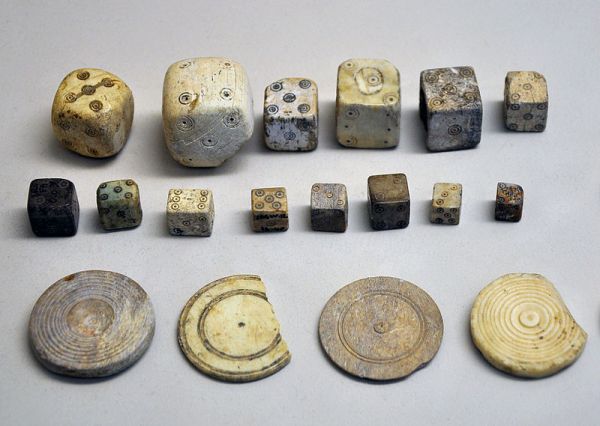 (Image credit:
(Image credit: 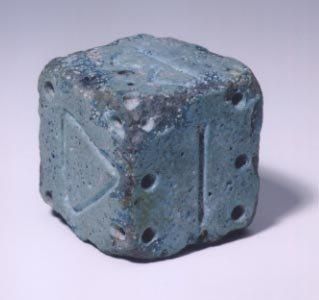 And with that, gambling -and dice gaming- was born, leading to the next big step in dice evolution. Around 7,000 years ago, ancient Mesopotamians carved down the rounded sides of the astragali to make them even more cube-like. Now they could land on one of six sides, allowing the outcome to become more complex. As their technology advanced, materials such as ivory, wood, and whalebone were used to make dice. (Image credit:
And with that, gambling -and dice gaming- was born, leading to the next big step in dice evolution. Around 7,000 years ago, ancient Mesopotamians carved down the rounded sides of the astragali to make them even more cube-like. Now they could land on one of six sides, allowing the outcome to become more complex. As their technology advanced, materials such as ivory, wood, and whalebone were used to make dice. (Image credit: 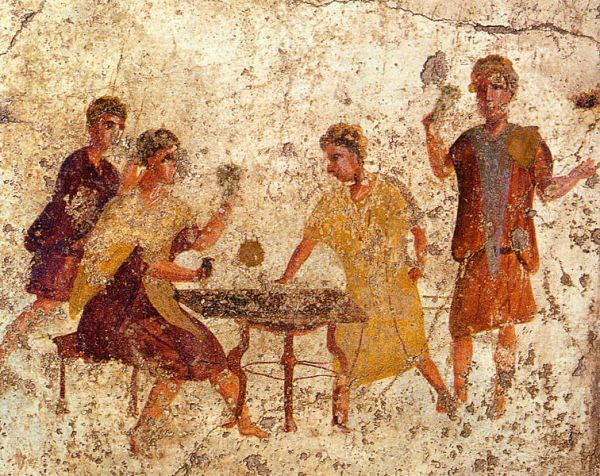

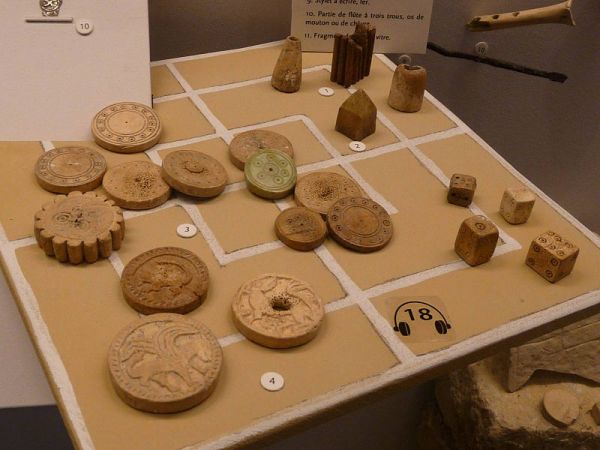 (Image credit:
(Image credit: 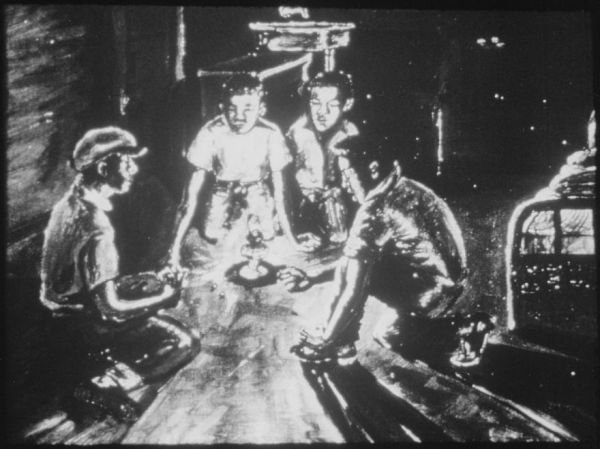
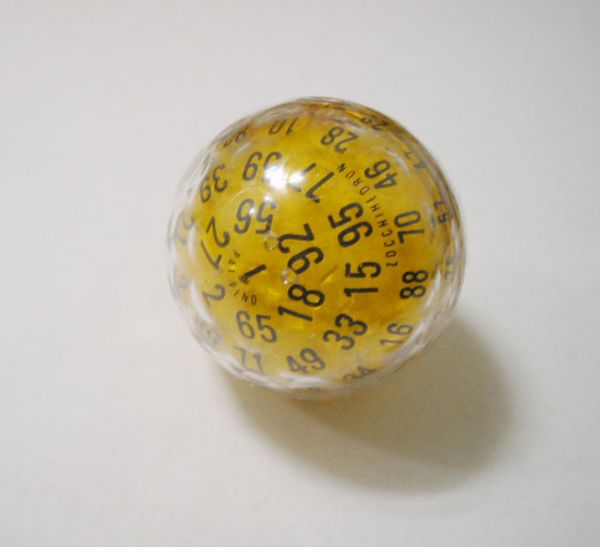 (Image credit:
(Image credit: 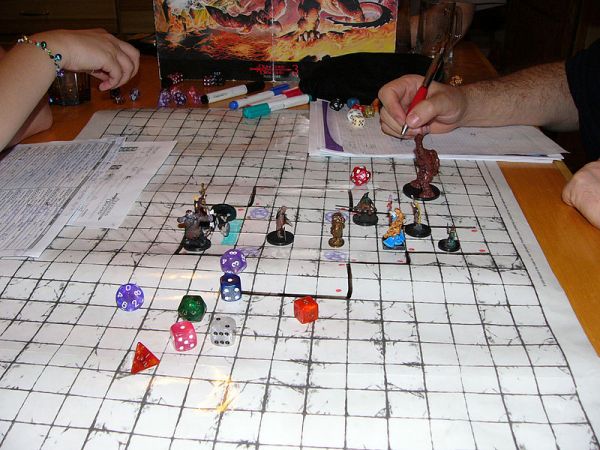 (Image credit:
(Image credit:  The article above is reprinted with permission from
The article above is reprinted with permission from 




















































